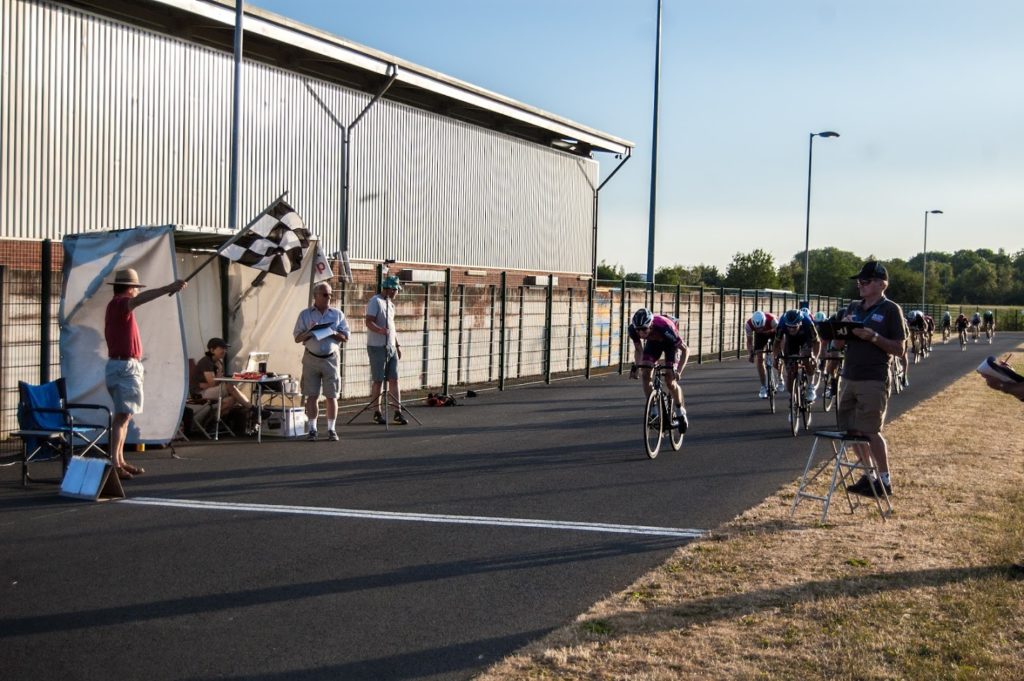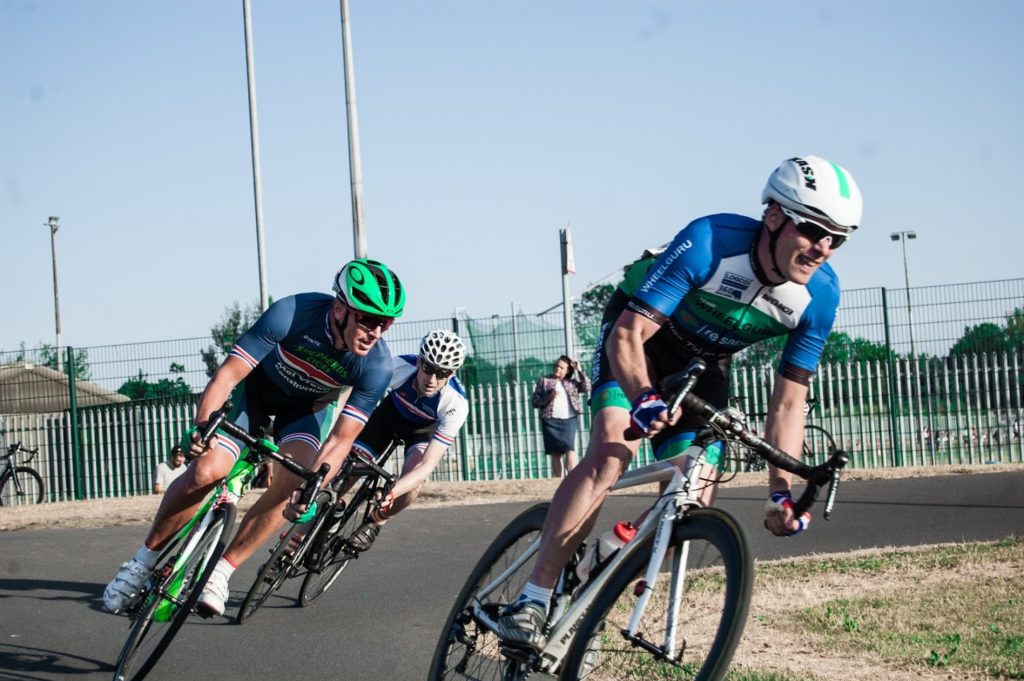A staple of the UK, Australian and US racing scenes, the criterium is a thrilling, close quarters strain of bicycle racing. Typically ‘crits’ are raced on geared road bikes – with some notable exceptions like the Red Hook Crit, where competitors use brakeless fixed-gear bicycles and crash a lot. The races often use purpose-built closed-circuit tracks, with plenty of tight turns packed into a ‘lap’ about a mile long. Not all crits happen on cycle tracks though; there are races that happen on disused airfields around the UK, and even on the roads around industrial estates.
Each track is different, so requires a different calibration of skills, but typically the best crit racers have a balance of technical cornering ability and raw power. It’s a discipline that favours the bigger riders, too, typically taking place on flat or almost-flat courses.
The number of laps you’ll ride really depends on the length of the circuit, but riders are expected to race for anything around 45 minutes to an hour. You’ll often find formats like “50 minutes + 5 laps”, where the racers determine themselves whether it’s a brutal, strung-out affair from the gun, or a sedate procession until the last lap mayhem.

Crit racing is perhaps the easiest discipline of bike racing to get into. Not only can it be done with run-of-the-mill road cycling kit, it can also be done with little training and racing experience; perfect for those budding racers trying to get their first taste of competitive cycling. In the UK, you’ll probably need to sign up with British Cycling and buy a racing license before you can gain entry to most crits, although there are some that operate outside of BC and therefore do not require a license. One important thing to note is that currently, British Cycling do not cover fixed gear crits.
British Cycling organises its races by category of rider, or ‘cats’. A category 4 rider is a rank novice, while a ‘cat 1’ is one step away from moving up to the Elite ranks. Your category for the year is determined by your performance in the previous season. Win enough points (awarded based on your position in races) and you move up, have a bad year and you may be relegated back to a lower category.
Whether naïve newbie or former pro looking to re-find some form, crit racing makes no discriminations. If swallowing lactate and chewing handlebar tape sounds like your kind of ‘fun’, then you may just be a fledgling crit racer.
Here are some more tips to help you start planning out your start-up, crit racing career:
Equipment
Any road bike will do, this isn’t a test of tech and much more a test of a rider’s mettle and sheer strength. Gearing is particularly important and since most circuits are flat, you may just want to take off those compact cranks and go for a classic 52-42, channelling your inner ‘Cannibal’. Again, British Cycling has some stipulations that apply to their races, such as ‘no mudguards’ and ‘no on-bike cameras’.
If you’re looking to invest in a crit-racing bike, look for stiff frames made with tough materials that’ll withstand the odd bump or crash. Aluminium is a good low-cost option, but you’ll see plenty of people – even Cat 4s – on £6k carbon-fibre machines. Our advice is only race what you can afford to crash!
Starting out
Start by looking in your local area, racing against people you know will not only increase the levels of fun, camaraderie and – of course – competition, but it will also introduce you to the demands of crit racing without having to travel far and wide.
Another positive aspect to crit racing is that it takes place all-year round, whereas traditional road racing tends to knock things on the head at about this point in the year. Look out for clubs near you running winter crit series if you want to keep your hand in through the tough, chilly months and hit the ground running next season.

Preparation
It’s all about training for speed with crit racing, the ability to dig deep into that red zone and keep on motoring, even when the legs turn to jelly and vision gets hazy. HIIT training is a perfect choice, pushing your anaerobic zones to their max will slowly but surely transform you into a fully-fledged, crit racing star.
You may also want to check out the course before the big race day, analysing each corner and how you’re going to take it while ensconced in a big group of riders. Mark where the danger points are, the easy points and where exactly to launch your winning sprint from.
Finally, get as much bunch riding practice as you can – there’s nothing quite as stressful as trying to keep up in a 60-strong bunch as they ramp the speed up at the start of a crit.
The event
Arrive with plenty of time, make sure your number is pinned on correctly – following the strict, four pin rule (one for each corner so it doesn’t flap about in the wind) – roll up to the start line, look down the line of your competitors and gauge the nerves. Once the starting gun sounds, dig in and hold on – you’re in for one hell of a ride.
All images credit to Fausto Agency